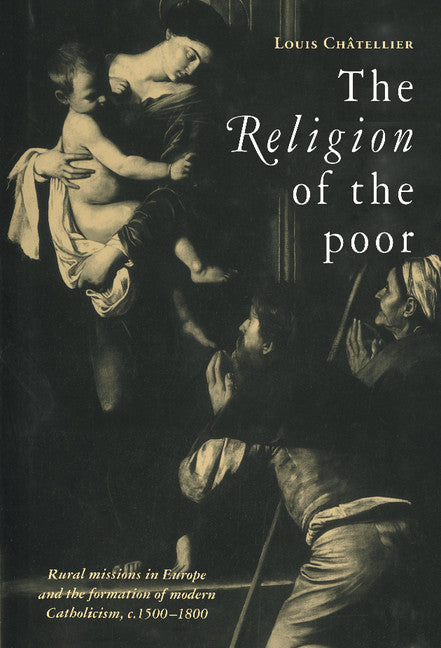Freshly Printed - allow 8 days lead
Couldn't load pickup availability
The Religion of the Poor
Rural Missions in Europe and the Formation of Modern Catholicism, c.1500–c.1800
The Religion of the Poor is an ambitious survey of Catholic missions into the European countryside from 1500 to 1800.
Louis Châtellier (Author), Brian Pearce (Translated by)
9780521562010, Cambridge University Press
Hardback, published 28 August 1997
262 pages, 3 b/w illus. 16 maps
22.9 x 15.2 x 1.6 cm, 0.555 kg
'Châtellier's potent book fills a glaring gap in our understanding of Christian mission … this book will perform long service as a mine for students and researchers alike.' Journal of Ecclesiastical History
The Religion of the Poor is an ambitious survey of Catholic missions into the European countryside from 1500 to 1800. The acclaimed French historian Louis Châtellier analyses the impulses to missionary activity at the end of the Middle Ages, and the specific conception of Ignatius Loyola. He then outlines in detail the development of missionary activity after the Council of Trent. In the second part Professor Châtellier discusses the type of religion proffered by the missionaries, examining a variety of key themes in Catholic belief, including the role of deity, of the cross, and of Satan. The book contains a concluding summary of the impact of these rural missions up to the French Revolution, and documents the way in which they changed in reaction to external social and political circumstance.
Introduction
List of Abbreviations
List of Maps
Part I. The Extent of the Missions in Europe: 1. From the Middle Ages to modern times
2. The spirit of the Council
3. From the missionary impulse to the impossible mission
4. Apotheosis
Part II. The World Disillusioned: 5. God
6. The cross
7. Bread
8. From pardon to salvation
9. Satan
Part III. Towards a New Religion: 10. Changing the village
11. The missions challenged
12. From the religion of the poor to the religion of modern times
Conclusion
Notes
Index.
Subject Areas: History of religion [HRAX]


